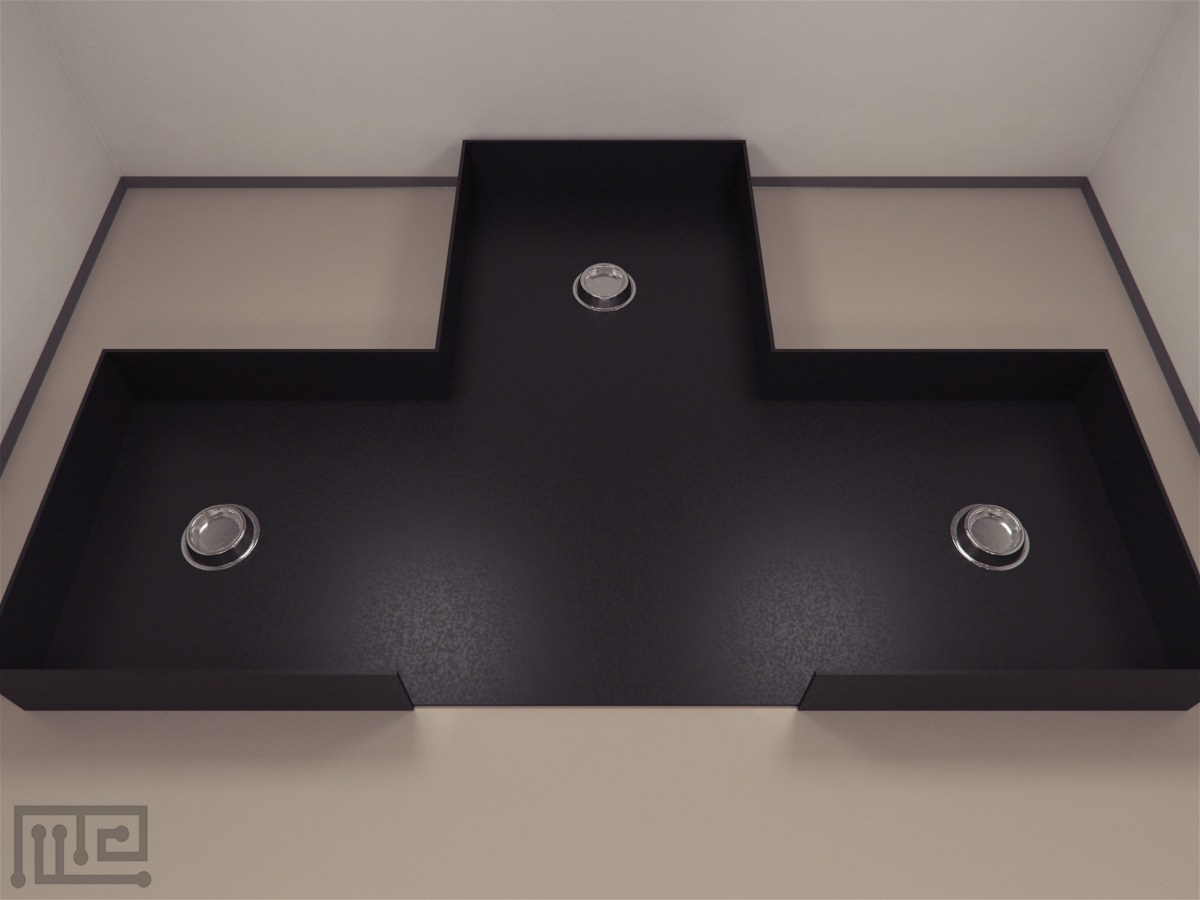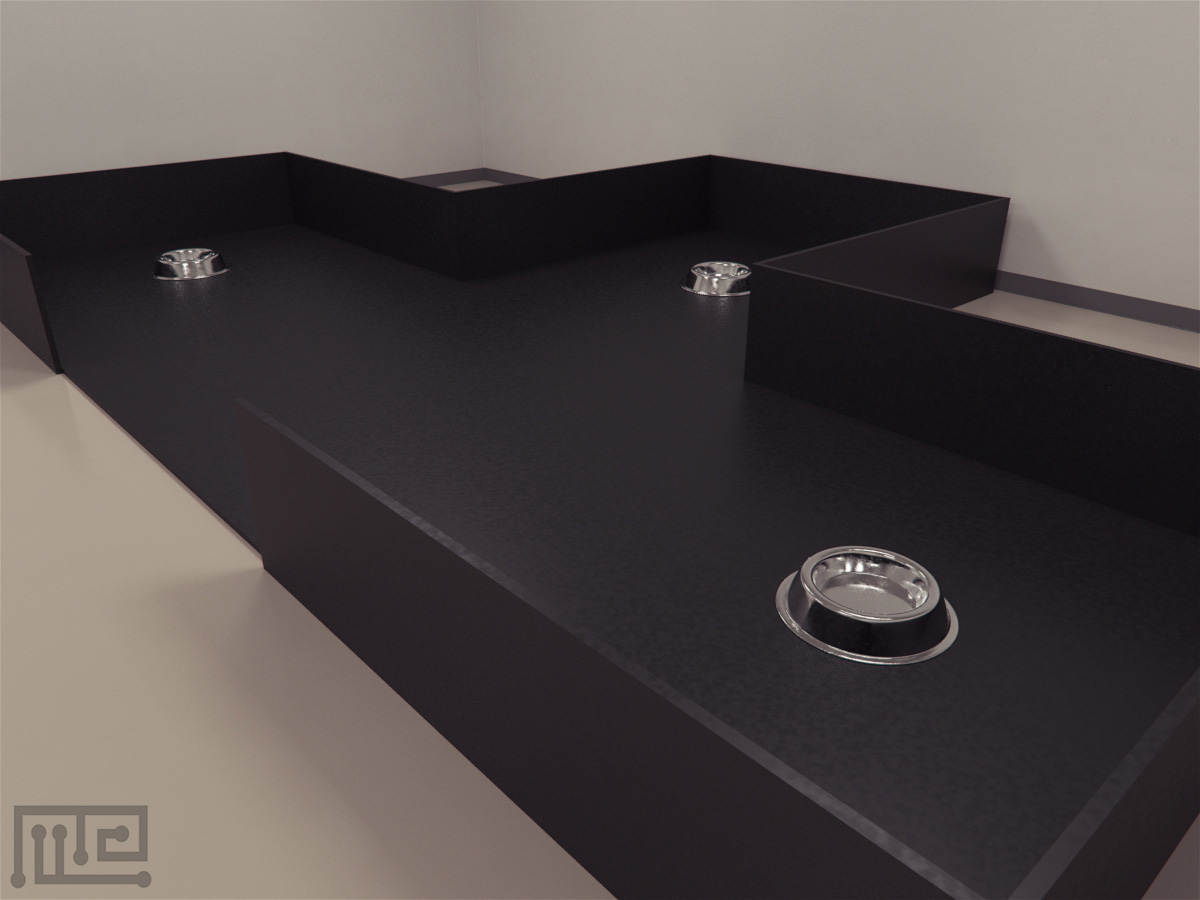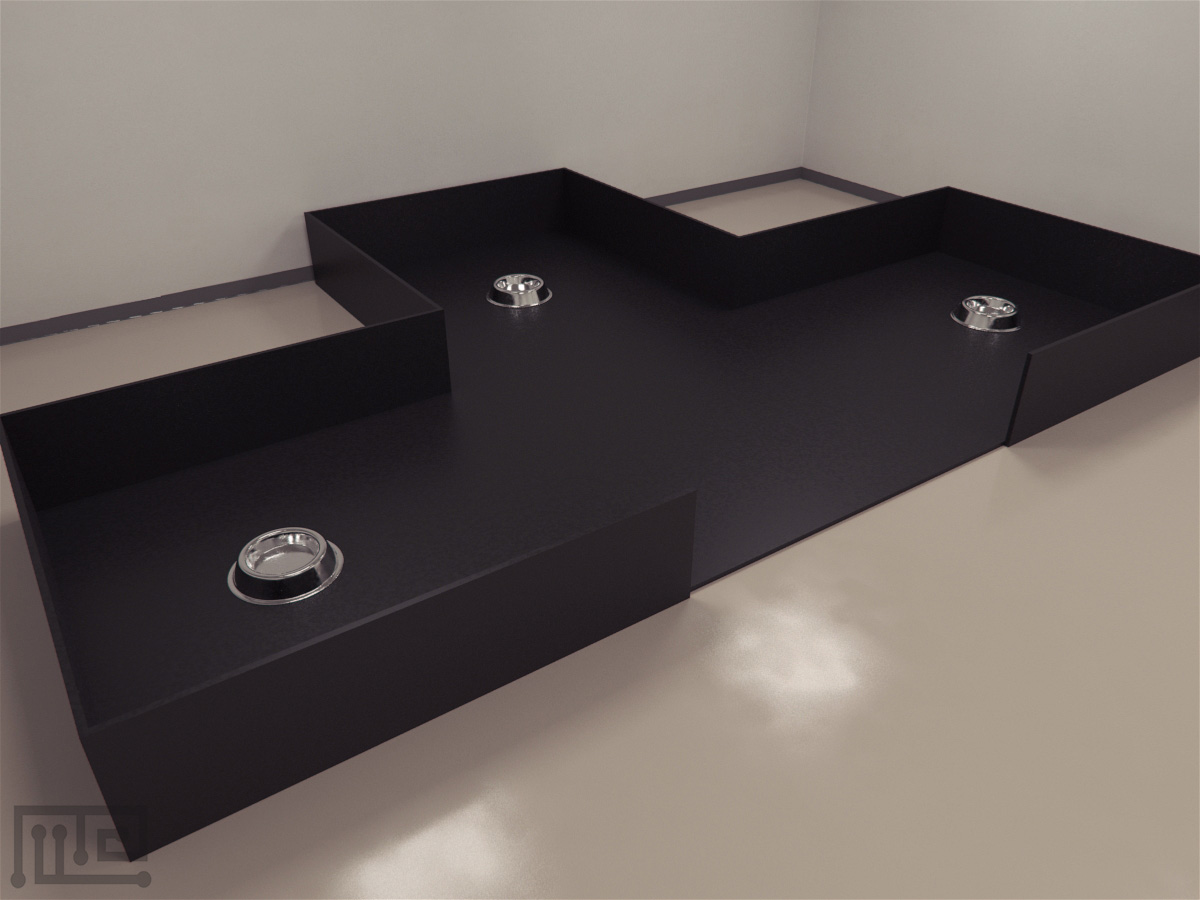Description
The Pig Conditioned Place Preference is used in experiments to investigate pigs’ preferences for rooting materials. It is shaped like a capital T.
Eighteen materials are allocated to six categories, each of which consists of three similar materials based on characteristics such as structure, size of particles, complexity, destructibility, and digestibility. Twelve pairs of pigs choose among the three materials of each of the six categories in a balanced design.
Within each category, each pair is given four instantaneous choices among the three materials in a three-armed maze. ‘No choice’ is scored if the pigs do not enter one of the maze-arms within 90 s.
Maze Engineers offer Pig CPP Maze. Custom coloring and customization are available upon request.
Price & Dimensions
Pig
$ 2290
+S&H- Arm Length of rooms: 2.4m
- Arm Width of rooms: 2.4m
- Width of centrally placed start are: 2.4m
- Length of centrally placed start are: 2.4m
- Width of walls and gate separating rooms and start area: 1.75m
Documentation
Introduction
The Pig CPP chamber is a three-way maze used to study complex cognitive behaviors, memory, and learning in pigs. The pig CPP apparatus uses the same principle as the Conditioned Place Preference apparatus that is often used in rodents to assess responses to conditioned cues.
The three-arm design of the pig CPP provides a simple set-up for evaluating performances of the animals. The task involves the animal choosing one of the three arms based on its preference for the different stimuli provided in each arm. Since pigs can show aversiveness to being tested individually, the pig CPP is designed to accommodate the movement of pairs of pigs. The task can be extended to evaluate the effects of brain lesions, pharmacological manipulations and other behavior changing treatments on the preferences and learning and memory of the pigs. The pig CPP can also be used to understand underlying processes affecting preferences and reasoning abilities.
The pig CPP consists of three identical compartments along with a starting area. The apparatus also comes equipped with removable doors to block of arms to confine the animal or create an area of novelty during testing. Other similar mazes used to study cognitive behavioral patterns in pigs include the pig T-maze, the piglet T-maze, the pig 8 arm radial maze and the pig open field maze.
Apparatus and Equipment
The pig CPP is a three-arm maze with a start area. The choice arms (rooms) are situated on the right side, the left side and straightforward directionally of the start area. Each room and the start area have an equal dimension of 2.4 m × 2.4 m each. In addition to the high walls of the maze, each room’s entryway and the start area has a 1.75 m wide gates constructed using vertical tubular metal bars.
Training Protocol
Clean the apparatus properly before training to remove waste materials and the presence of any lingering stimuli that can affect the task performances. For recording the Noldus EthoVision XT tracking system can be used to monitor the movements of the test animal inside the pig CPP.
Habituation & Pre-training
Walk the animals in pairs (to avoid stressing the animals) from the housing pen to the holding area and hold them there for at least 30 seconds. Once the holding period is over, open the gate to the start area and encourage the animals to enter it. Begin training by first opening the entryway to only one of the rooms in the maze. If the animals do not enter the room within 2 minutes, gently nudge them into it and block the entryway. Allow the animals to familiarize themselves with the room for at least 3 minutes. Following this guide the animals to the holding area and let them stay there for at least 30 seconds. Repeat the process for the remaining two arms in similar fashion. Train each pair three times each day for three consecutive days. Prior to the first test, allow each pair one training session in the maze.
Preference Test Task
Walk the animals in pairs (to avoid stressing the animals) from the housing pen to the holding area and hold them there for at least 30 seconds. Place the stimuli in their corresponding rooms and ensure that all the entryways in the maze are open. Allow the animals ninety seconds to choose their preferred room. Once the animals enter their preferred room, confine the animals to the room for 3 minutes by closing the door. Evaluate the pair four times in succession. Repeat process for other pairs.
Evaluation of rooting material preference in pigs
The purpose of the research carried out by Jensen, Studnitz, Halekoh, Pedersen, and Jørgensen (2008) was to investigate the preference of pigs for rooting materials using the pig CPP. Rooting materials were broadly classified into CHIP, TOY, ROUGH, EARTH, HAY, and STRAW based on their structure, particle size, complexity, destructibility, and digestibility. Male and female pairs of pigs were evaluated for their rooting material preferences for 18 different materials in different combinations of their categories in the maze rooms. Pigs showed clear preferences within the categories EARTH, CHIP and ROUGH, with highest preference for compost, chip, and maize-silage materials within each category. In the latter two categories, however, preferences did not reach statistical significance. No significant preferences for materials in the categories TOY, HAY and STRAW could be observed in all tested groups.
Data Analysis
The following parameters are observed in a pig CPP:
- Number of entries into the right arm
- Number of entries into the left arm
- Number of entries into the straight arm
- Latency to initiate the task
- Time spent in the start area
- Time spent in the right arm
- Time spent in the left arm
- Time spent in the straight arm
A choice is recorded if one of the animals in the pair steps into the room with all four legs and the other animal crosses the same room’s threshold by at least two legs.
Strengths and Limitations
Strengths
The pig CPP chamber allows assessment of pig preference and learning and memory abilities using a simple three-arm design. The simplicity of the design makes it easy to adapt and modify for different investigatory needs. The gates of the apparatus allow confinement of the animal which can be used to induce delays within tasks. By using an opaque gate instead of bars, an area can be blocked off to create novelty during training. The maze is large enough to accommodate pairs of animals. The observations in the pig CPP are straightforward allowing ease of data analysis. The maze can be used to evaluate different behaviors such as predator response and the effects of pharmacological manipulations on the cognitive abilities of pigs.
Limitations
The pig CPP relies on appropriate levels of training to be able to evaluate short-term and long-term preferences. Evaluating individual pigs may result in inaccurate observations, since the pigs may have an aversive response to isolation. Maintaining the level and consistency of the training is vital for achieving accurate results. Cleaning is a necessary parameter as it eliminates unnecessary hurdles in the execution of the experimental process. Age and gender of the test animal are other factors which are to be taken into consideration for unbiased results.
Summary
- The pig CPP chamber is used in the assessment of complex cognitive behaviors of pigs.
- The pig CPP consists of three equal sized choice rooms and start area that can easily accommodate pairs of pigs.
- Each room and start area are also equipped with gates that can be used to confine the animal to an area of the maze.
- The maze can be used in experiments studying memory, spatial learning, drug-induced treatments, and brain injuries.
- Pig CPP is ideal for short-term preference experiments. Evaluation of long-term preferences in the maze requires consistent training.
References
Jensen, M. B., Studnitz, M., Halekoh, U., Pedersen, L. J., & Jørgensen, E. (2008). Pigs’ preferences for rooting materials measured in a three-choice maze-test. Applied Animal Behaviour Science, 112(3-4), 270-283.
Request a quote
"*" indicates required fields



